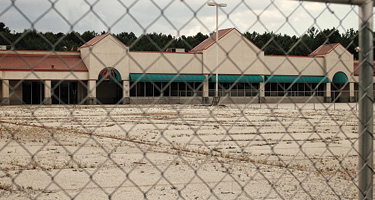Fewer cars are on the road these days than at any time in recent history, but the dangers of public thoroughfares haven’t gone away—and many are hiding in plain sight. Adding to the potential peril, drivers feel more at ease to speed on roads with fewer vehicles and less-visible law enforcement. The situation is compounded further still by the pandemic, given that maintenance along rural two-lane highways—the majority of roads in the United States—is often neglected even in “normal times.”
With tax revenue drying up, state governments have been hit hard, and departments of transportation (DOTs) haven’t been spared. As such, while road maintenance is often deferred even in periods of robust revenue, in times of attrition it’s an area of government service that truly suffers.
Motorists aren’t likely to think of road maintenance every time they turn over their ignition, but such modest-seeming problems as drop-offs at the road’s edge, overhanging trees and other deferred repair work are a recipe for serious injury and, often, fatal collisions.
Preventable Collisions by the Numbers
According to the National Highway Traffic Safety Administration’s Fatality Accident Recording System, 53 percent of fatal crashes can be attributed to roadway departures. In real numbers, that translates to 34,017 fatal crashes annually, with roadway departures responsible for 19,753 of those, resulting in more than 22,000 deaths a year. To put an even finer point on it: 59 people in the United States will die in a roadway-departure crash today. That’s one fatality every 24 minutes, and more than half of those deaths will occur on a two-lane highway.
Over the past few years, we’ve been asked to investigate, and then litigate, many cases of preventable collisions caused by poor road maintenance. Pavement-edge drop-offs of greater than three inches are common on undivided two-lane highways throughout the country—a consequence of many state DOTs’ lack of understanding of the danger these conditions present, not prioritizing funding for repairs, and the failure of DOT maintenance personnel to appreciate the need to fix these problems.
Poorly Maintained Roadway Edges
In a typical driver overcorrection, the vehicle departs the road, typically on a horizontal curve. The car experiences “tire scrubbing” as it attempts to right itself, over-responds as a result of the loss of friction upon remount—and a cross-centerline head-on collision ensues.
The tragic stories are seemingly endless. One recent case that inspired this piece concerned a commercial courier traveling within the posted speed limit on an undivided two-lane road in San Diego. As the driver’s vehicle entered a slight curve, his passenger-side wheels left the road, his tires scrubbed, and upon reentry he lost control and collided head-on with a minivan carrying a family of eight. The mother and two small children in the minivan were killed; other occupants were badly hurt, with injuries ranging from paraplegia to traumatic brain injury. The matter resulted in a $23 million verdict against the California Department of Transportation.
State DOTs have known about the dangers of pavement-edge drop-offs, and the need to fix them, for decades. Many have a two-inch standard, requiring shoulders to be backfilled or otherwise repaired when a drop-off is greater than that. Such standards have been in place for more than 40 years in California and many other jurisdictions, yet these types of crashes inexcusably continue to represent a majority of roadway-departure fatalities.
Deadly Overhanging Trees
As ubiquitous as pavement drop-offs have become, poorly maintained trees hanging over roads are another prominent danger. Again, as tax revenue has dried up, maintenance budgets have been slashed and basic safety measures ignored.
In a case we recently dealt with, a 2,500-pound tree limb hanging over a two-lane road in a rural part of San Diego snapped off just as our client was passing underneath on her motorcycle. The injuries she sustained left her a paraplegic. The tree had been damaged by fire a year earlier, was obviously rotting, and was within the state’s right of way.
The evidence showed that the tree had been pruned by DOT personnel to maintain the necessary 17 feet of clearance required for semi-truck traffic to pass beneath. For reasons that discovery will bear out, though, DOT personnel were either aware of the danger posed by the tree and did nothing, or they simply ignored or forgot about it until it was too late. Tree removal would have cost the state a few thousand dollars; instead, it will likely be on the hook for an eight-figure liability for the lifetime care needs of our paralyzed client.
If you or someone you love is injured in a serious collision, the other driver may not be the only party held responsible. In fact, the other driver—if there is one—might not be responsible at all. State laws and federal regulations require that our roadways be maintained for the safety of all drivers. When the responsible government entity breaches the public trust, it must be held accountable. The deadline to file claims is often very short—within six months of the accident or less—and these cases pose unique challenges and legal obstacles. It’s imperative to find a lawyer well-versed in the legal twists and turns inherent to holding the government responsible for dangerous roads.
Brett J. Schreiber is a partner at Singleton Schreiber McKenzie & Scott, LLP, a plaintiffs’ and criminal defense super-firm, offering a breadth and depth of services that is unrivaled nationwide. The trial and appellate lawyers of Singleton Schreiber McKenzie & Scott bring to bear decades of experience in: Serious Personal Injury; Mass Torts; Wildfire Litigation; Civil Rights; Medical Malpractice; White Collar and Federal Criminal Defense; and Appeals.
If you’re looking for legal guidance on any matter, use the Best Lawyers Find a Lawyer tool to connect with experienced lawyers ready to assist.
















